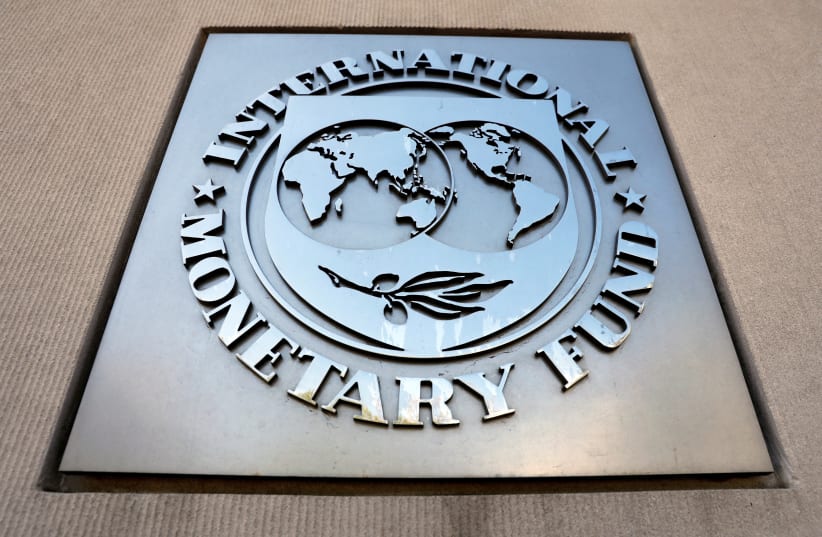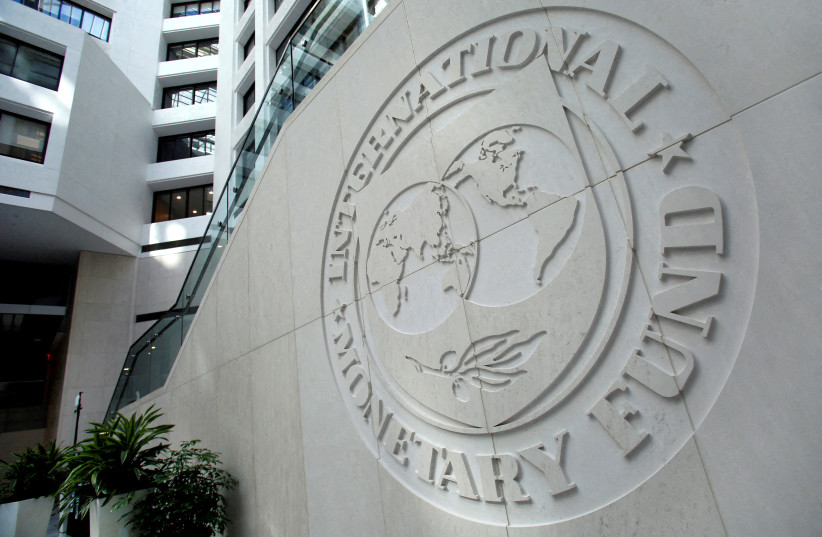Political troubles have been continuing to roil Pakistan with the imprisonment of former Prime Minister Imran Khan and the planned redrawing of electoral boundaries that may delay elections scheduled for later this year, but the country has quietly received the first $1.2 billion of a $3 billion bailout package approved by the International Monetary Fund recently.
The package, for more than was initially expected, has been designed to support the troubled country’s economic stabilization program and reduce the chances of its defaulting on its debt repayments.
The funding deal was approved after Pakistan, the world’s fifth most populous country, found itself on the brink of defaulting on its debts in June, with only enough central bank reserves to cover one month of controlled imports.
In urgent negotiations that month, Pakistani authorities and the IMF Executive Board began discussing payment of the remaining $2.5 billion from a $6.5 billion rescue package negotiated in 2019 that was expiring on June 30.
Ultimately, the IMF Executive Board approved a new $3 billion deal, formally titled a Stand-By Arrangement, to be paid out over nine months, with the first disbursement of some $1.2 billion payable immediately. That payment was made in mid-July.
“The new Stand-By Arrangement will support the authorities’ immediate efforts to stabilize the economy from recent external shocks, preserve macroeconomic stability, and provide a framework for financing from multilateral and bilateral partners,” the IMF said in a statement after the agreement was reached.
Long-time Pakistani allies Saudi Arabia and the United Arab Emirates, which had earlier pledged funding for Pakistan, held off until it was clear there would be a deal with the IMF, and then sent a further $2 billion and $1 billion respectively to Pakistan in July in the wake of the IMF deal.
Structural issues in Pakistan's economy
Pakistan has been grappling with deep-rooted structural issues in its economy for many years, including a weak tax collection system, widespread tax evasion, inadequate measures to curb corruption, excessive government expenditures over revenues, rising public debt, and a falling currency value. The political and economic turmoil has only increased since then-Prime Minister Imran Khan was deposed in April 2022 by a vote of no-confidence.
“Pakistan’s economy was hit hard by significant shocks last year, notably the spillovers from the severe impacts of floods, the large volatility in commodity prices, and the tightening of external and domestic financing conditions,” the IMF said in a statement after the agreement was reached. “These factors, together with uneven policy implementation … combined to halt the post-pandemic recovery, sharply increase inflation, and significantly depleted internal and external buffers. The authorities’ new Stand-By Arrangement, implemented faithfully, offers Pakistan an opportunity to regain macroeconomic stability and address these imbalances through consistent policy implementation.”
The IMF statement also said the new agreement “will also create space for social and development spending through improved domestic revenue mobilization and careful spending execution to help address the needs of the Pakistani people.”
Pakistan‘s Prime Minister Shehbaz Sharif, who took office after Khan's ousting in April 2022, told a press conference in Lahore that his government had “inherited a crippled economy.”
The country’s economic crunch has affected all aspects of life. The depreciation of the rupee has exacerbated inflation, worsening poverty for people already struggling to make ends meet. The persistent fiscal deficit, in which government expenditures exceed revenues, has led to a rising public debt burden, which consumes a significant portion of the budget for debt servicing and leaves limited funding for public investment and development programs.
According to the Washington-based think tank the Heritage Foundation, political and social instability is hindering Pakistan’s economic development. The foundation says that Pakistan is heavily indebted to foreign lenders, including China.
In addition, in 2022, devastating floods caused more than $10 billion in damage and affected more than 30 million Pakistanis. Textiles and apparel account for most export earnings, but much of the economy is informal, and underemployment is high.
Pakistan has also experienced a chronic energy shortage, resulting in frequent power outages and hampering industrial productivity. Insufficient investment in the energy sector, mismanagement, and circular debt have exacerbated the crisis. The energy deficit has deterred domestic and foreign investment and hindered economic growth.
The IMF said in its press release that the Pakistani government “must introduce ‘timely’ reforms in the power sector’s tariffs.”
This would mean that the government would have to increase electricity rates further, at a time when inflation is already at a record high. Increased electricity prices would be a significant burden on much of the population.
The Media Line spoke with several experts on the reasons behind Pakistan’s worsening economic situation.
Michael Kugelman, the director of the South Asia Institute at Woodrow Wilson International Center for Scholars in Washington, told The Media Line that poor lawmaking had contributed to the crisis.
“Pakistan’s economic situation is dire because of the usual bad policies, including relying on high-cost fuel imports and non-competitive textile exports, leading to a debt crisis and economic instability that worsened because of external shocks linked to COVID and the war in Ukraine,” Kugelman said. “With things getting worse last year, the government failed to give the economic problems the urgency they required. … The political situation has worsened the economic crisis because it has distracted the government from giving the economic stress the priority policy attention it badly deserved.”
Kugelman said Pakistan’s textile exports to the West are a particular problem, as they “struggle to compete” with similar products from other countries. The United States is Pakistan’s largest export destination.
In addition, “the political mess and the uncertainty that comes with it has clouded foreign investor perceptions of Pakistan and given pause even to multilateral creditors like the Asian Development Bank and indeed the IMF, as well as key bilateral creditors like China and Saudi Arabia,” he said.
However, he said the IMF deal “will get Pakistan’s creditors to unlock funds.”
Amina Qureshi, assistant chief of policy at the Pakistan Institute of Development Economics in Islamabad, told The Media Line: “When a country consistently spends more than it earns, the economic situation becomes what we are undergoing today. Spending more is not just an issue, it is the unproductive sources that Pakistan has invested in for the past several decades that have been unable to generate sustainable income streams for the future. Investing in education and human capital development was key to India unlocking its potential to where it stands today.”
She said that Pakistan had been facing political instability throughout its existence, distorting economic agents and their decisions.
“While the political unrest has added fuel to the fire in the current situation, with no clear policy reform agenda in sight and a lack of political will for consensus on reforms, this has not only shaken the investors’ confidence in the friendly countries but is also a cause of massive human capital flight from the country,” she said.
“The modern form of colonization still prevails in the world, where poor debt-ridden countries export raw materials to rich countries. In addition to this, their underdeveloped technology makes them a supplier of low-value-added goods in the global supply chain. Lack of financial, physical, and technological capital to extract minerals and produce high-value-added goods make them dependent on rich countries.”
Qureshi said those factors resulted in a cycle of “poor countries [becoming] more dependent on the rich while the rich become richer at the cost of the poor.”
Jazib Mumtaz, a Karachi-based senior research economist and analyst at the Policy Research Unit of the Federation of Pakistan Chambers of Commerce and Industry, told The Media Line that for the $3 billion aid package, “the cost of compliance is very high,” with new taxes already imposed on the salaried class, reducing their disposable income.
“Interest rates have been increased to a historical level of 22%, which would negatively affect business growth, resulting in higher unemployment. Therefore, we can foresee a difficult year ahead,” Mumtaz said.
Mumtaz also spoke of the trade imbalance, saying: “Pakistan has been exporting raw materials to the US and other Western countries, whereas Pakistan had to import value-added products at a higher cost, creating trade imbalances. Pakistan exported raw cotton, raw leather, and fruits and vegetables which do not have any value as compared to branded products.”
Shafqat Ali Khan, a Rawalpindi-based socio-political analyst, told The Media Line: “The dire economic challenges, such as inflation, unemployment, and insecurity about the future are the major factors contributing to people’s decisions to flee the country. People are fleeing because they’ve concluded that there are no economic opportunities and this applies to the poor and many of the wealthy and educated alike. Pakistan is experiencing both an outflow of impoverished migrants and a brain drain at the same time.”

